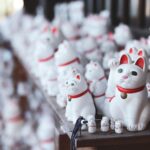Getting Perfect Me Time in Classic Tokyo’s Cafes
The coffee culture in Tokyo draws inspiration from different global influences including various American coffee style cafes to authentic Italian espresso bars, as well as entertainment cafes like the maid cafes (where waitresses are dressed in maid outfits), and numerous cuddly animal cafes which showcase cats, owls and mini pigs to name a few. We’ve reached new heights in the variety of cafes and the coffee culture in Tokyo. The local coffee shop has become more than just a cup of coffee. It has become the perfect place for get-togethers, chats with your loved ones, spending some quality Me Time, or meeting for business purposes. We are here to help …



































 Instagram
Instagram